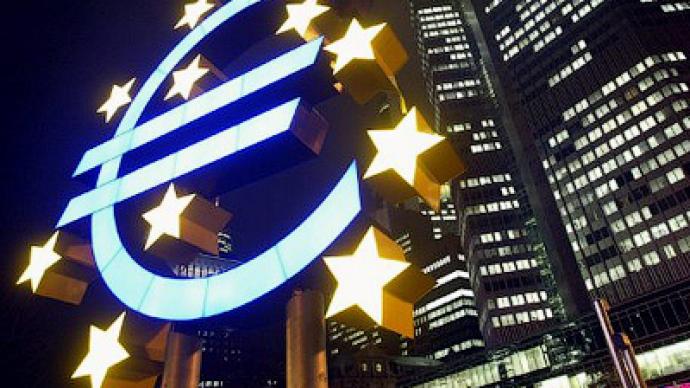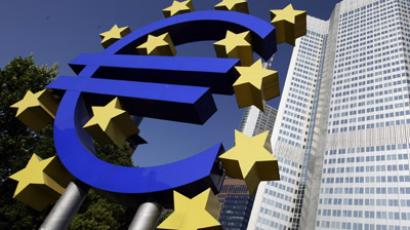Central banks, interest rates and the big Ponzi scheme

The market expects that the central bank put will be in place forever and doesn't think it needs to have a worry in the world. We think the market probably has it all wrong.
To say that the last four years since the financial crisis broke out in 2008 has been slightly atypical would be the understatement of the century. The central banks across the globe have reached deep into their toolbox – first by lowering interest rates to zero or effectively to zero, and then grasping at “unconventional measures” that are aimed at keeping rates low at the long end of the curve as well by buying up most of the bonds issued by their own governments' treasuries. Decades ago, the latter would have been called a Ponzi scheme, but in today’s world the measures are sold as the “only alternative”. Voltaire saw it coming."In general, the art of government consists in taking as much money as possible from one party of the citizens to give to the other." – VoltaireTraditionally, the central banks have only controlled the part of the yield curve from overnight and out to perhaps one year. But the severe drop in equities in 2008/2009 and the huge fiscal imbalances created from the biggest fiscal stimulus in history created a need for securing “orderly business” through ample liquidity at low rates. That was followed up with a PR blitz from central bank and policy makers, who told us: Trust us – we've got everything under control. Sure you do! Since then, we continue the migration from one bubble to the next, and now we are in a debt trap in which governments and banks remains thinly capitalized and have no access to further credit unless the central bank is willing.The world governments and commercial banks now take so much of the “credit cake” that the private sector is only left with crumbs. The private sector, which is traditionally the risk-taking and profitable side of the economy, has been cut off from its oxygen, credit – the macro side of the economy has overwhelmed the micro. This is a terrible mistake. All enterprising individuals and companies should want maximum flexibility and access to capital and risk; instead they are cut off, overtaxed and overregulated.In 2012, we have so far seen a gradual normalization of interest rates coming off extreme lows. The move this month has been dramatic relative to the recent past and has lead to the talk of changing growth fundamentals and the possibility that the economy (mainly the US) has turned the corner. We were constructive on the US back in Q4-2011 as we saw that the consensus projections of expected future growth were too low (Remember the "double dip" talk?) Now fast forward to Q1-2012 and the market is, in our view, too quick in projecting that the recent “stabilization” will blossom into long-term growth. It’s too early, if anything our forward looking indicators are showing signs of a possible slow down, so we believe that the US will still outperform in 2012, but only because everywhere else will fare much worse.This leaves us with the conundrum of the latest sharp rise in interest rates: Has the interest cycled bottomed? Is this the new "new normal" or is it simply a dose of mean-reversion? The governments and weak banks and over-indebted companies need very low interest rates to continue to carry and roll their gigantic debt loads, so this interest rate question is vital as the future path of rates will have a massive impact on future growth and the investment climate.
With that in mind, we offer three scenarios and our perceived odds of their probability:- Even lower interest rates/more unconventional measures going forward (Consensus: 60%) – based on infinite monetary expansion. This is the reflation trade. This is option favored by politicians as it is off balance sheet and "off accountability" for them as the central banks continue to bail out the sovereign and other large debt holders with the printing press. Since they pull the levers, this is seen as the most likely scenario and if you look at charts, it's also very appealing in terms of the continuity: ever lower interest rates in downward channel as seen above. But shouldn't the market recognize that central banks only go unconventional when the there is systemic panic and crashing markets? Particularly given the gross imbalances they have already introduced? Besides, now that they have force fed so much liquidity into the system, they have actually helped to remove the tail risks that lead to such outcomes in the first place. - Lower in a channel but all-time low in place (Consensus: 30%, but our preferred scenario) – rates have visited a long-term low as “unconventional measures” will need to be slowly unwound. The biggest policy mistake historically has always been for central banks to stay too easy for too long. The politicians are clearly getting “gun shy” in the face of the monetary bazooka of “unconventional measures”. Another show-stopper could the law of stock versus flow. The policy makers have printed in excess of 3 trillion US dollars globally to keep the financial market and governments afloat. This means that to have an additional impact the net new issuance of money needs to be much bigger in nominal terms and as the debt load swells, every incremental unit of debt sparks an ever diminishing return on growth. The printing presses slowing from here would have profound implications as we discuss below.- Crisis 2.0 (Consensus: 10%) – This is our old theme – which is that market participants will lose faith in the government and its ability to repay its debts. To some extent we have had already had a Crisis 2.0 in Club Med Euro Zone peripherals, but it has yet to pass on to the core Euro Zone economies like Germany and France, much less the UK, US, and Japan. This is the least likely scenario, but if we break the upper boundary of the channel in the chart above, it could touch off a whole new paradigm in which fiat money is no longer seen as sustainable.If we are right and the market's belief that "the next bailout always awaits in case" is wrong, then the move away from unconventional measures, i.e., infinite money printing, is a major game changer. The banks and government are dependent on the false sense of security low interest rates creates. The latest move in interest rates is actually tiny in the historical perspective. Were we to see an expansion in the volatility to the high-end of the present long-term trading range – from 3.00% to 4.75%, for example, it would have a dramatic impact on debt crisis.Across Europe and the US, home owners remain under pressure. A move in rates of any reasonable size would put millions more even further under water on their home equity. That is the negative impact of a debt trap, the inability to create any economic environment that allows us to extract ourselves from the pain of the debt service – just look at Japan. The stock- and house market topped in 1989 – now 22+ years later the stock market is 75% below its peak. Is it too negative to apply to the rest of the world? Probably, but a long life in trading has taught me a few long-term facts. One: everything mean-reverts – What goes up must come down. (Think stock market, house prices, state intervention, and excess of all kinds.) And more importantly – Two: we never learn anything from history.Steen Jakobsen, chief economist at Saxo Bank, is an author of the above article.Disclaimer: The views and opinions expressed in the story are solely those of the author and do not necessarily represent those of RT.














